What do you do if Jeff Bezos releases a cool video showing a rocket taking off, separating it's cargo and then landing? Yeah, that's right: you block off your evening and simulate it with SystemModeler!
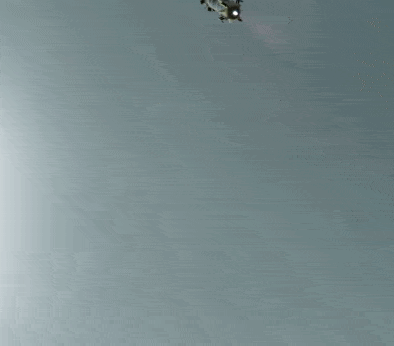
To start off with, not all details are known about the New Shepard. I used a FAA report (link) and some guessing to get parameters for weight, thrust, size etc. Next, to get something to start with, I modeled a pipe with a thruster on it.

This can be thought of as the rocket engine and the main propulsion body. This is what it looks like in the Animation window of Simulation Center:

After verifying that this could take-off and propel the body to a high elevation I started to add the crew module:
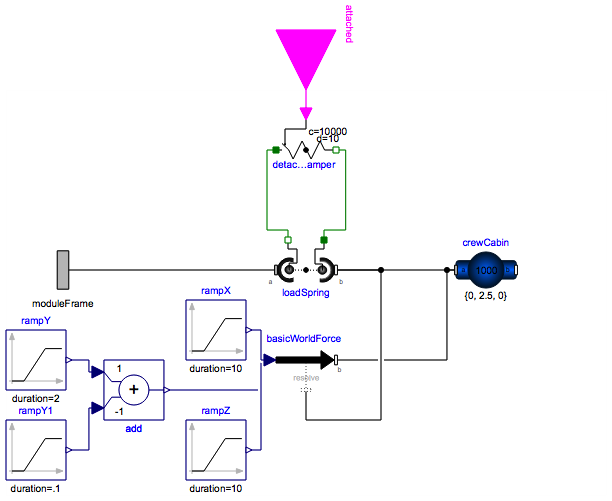
The crew module must be able to separate from the main body, so I constructed a custom component with the following equations:
f_d = d * der(s_rel);
f = if attached then c * (s_rel - s_rel0) + f_d else 0;
When the detach signal arrives the crew cabin will no longer be attached to the propulsion module. At this time the interstage will provide propulsion. That's what you see in the basicWorldForce above. Looking at the system at the time of separation it looks like this (the red arrow is a force arrow showing force on the propulsion module.):
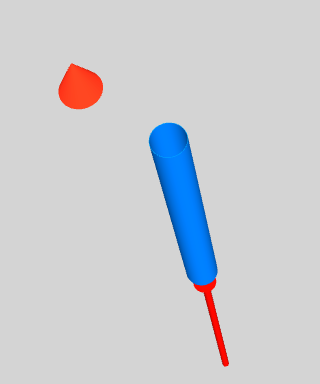
After I verified that separation worked, it was time for the toughest part: to land the propulsion module. To do this I connected a control system to the propulsion stage and started trimming it for a soft landing. 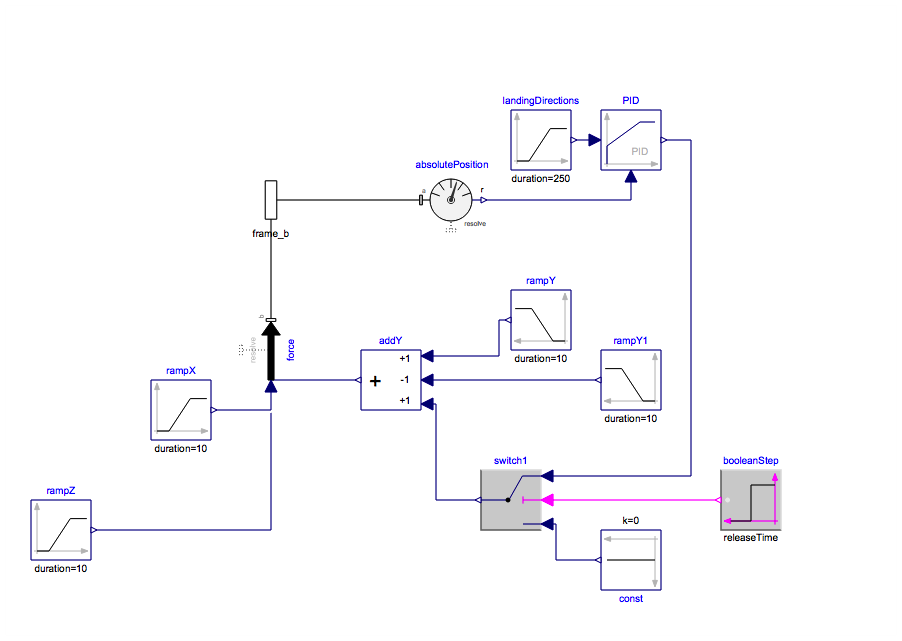
Finally, putting it all together we get the final model:
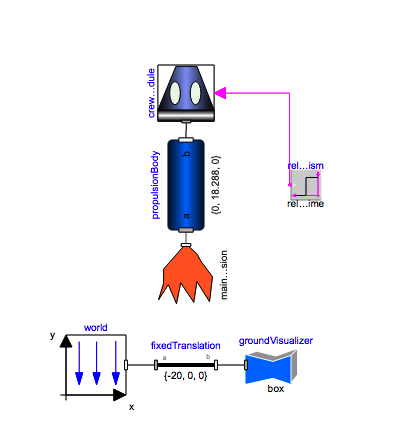
To sum it up, I created a simple video showing the three interesting parts: YouTube link
Note: There are many more things to add to this model. Here are some, that I challenge the community to add. I've attached the model to this post.
- Separation based on height instead of time.
- Simulate it to reach 100km.
- Simulate the parachute for the cabin crew.
- Take into account the weight change due to burnt fuel.
- Design a better control system. (Currently it impacts the earth at 9 mph)
- Add forces, and wings, for X and Z direction.
- Document components & modeling assumptions.
- Add CAD shapes to make it look more realistic.
- Model the physics of the engines, not just "raw" forces.
- ... Many more fun things to do!
 Attachments:
Attachments: